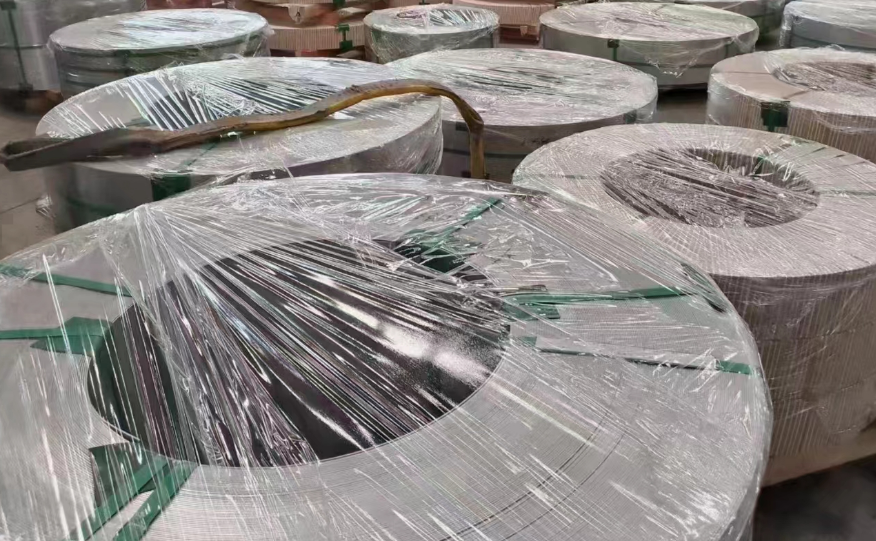When it comes to building structures, two metals that often come under comparison are stainless steel and aluminum. In this article, we’ll provide a detailed comparison between stainless steel vs aluminum, discussing their strengths, weaknesses, and applications in the context of building structures.

Stainless Steel vs Aluminum for Building Structures
Stainless Steel vs Aluminum for Building Structures – 1. Stainless Steel
Stainless steel is a popular choice for building structures due to its exceptional strength, durability, and corrosion resistance. Its strength-to-weight ratio is exceptional, making it an ideal material for load-bearing structures that require high tensile and compressive strength. Additionally, its corrosion resistance, which is derived from the chromium content, ensures long-term durability even in harsh environments.
Advantages of Stainless Steel
- Strength and Durability: Stainless steel has high tensile strength and can withstand extreme loads without breaking or deforming. This makes it suitable for bridges, high-rise buildings, and other structures that require exceptional load-bearing capacity.
- Corrosion Resistance: The chromium content in stainless steel forms a protective oxide layer on the surface, which prevents rust and corrosion. This makes it suitable for outdoor applications and structures exposed to weathering elements.
- Aesthetic Appeal: Stainless steel has a sleek and modern appearance that adds aesthetic value to buildings. It can be polished to a smooth, shiny surface, enhancing its visual appeal.
- Longevity: With proper maintenance, stainless steel structures can last for decades, even in harsh environments.
Disadvantages of Stainless Steel
- Cost: Stainless steel is typically more expensive than aluminum due to its superior properties. This can make it a costlier option for some building projects.
- Weight: Although stainless steel is strong, it’s also relatively heavy compared to aluminum. This can make it less suitable for applications where weight is a critical factor.
Stainless Steel vs Aluminum for Building Structures – 2. Aluminum
Aluminum is a lightweight metal that offers excellent strength-to-weight ratio, corrosion resistance, and ductility. It’s widely used in building structures due to its unique combination of properties.
Advantages of Aluminum
- Lightweight: Aluminum is significantly lighter than stainless steel, making it an ideal choice for structures where weight is a critical factor. This reduced weight can lead to cost savings in transportation, installation, and foundation requirements.
- Corrosion Resistance: Aluminum naturally forms a protective oxide layer on its surface, which helps resist corrosion. However, this corrosion resistance is not as strong as that of stainless steel, especially in saltwater or high-humidity areas.
- Ductility and Formability: Aluminum is highly ductile and can be easily worked, shaped, and formed into complex structures. This makes it suitable for applications that require intricate details and curved shapes.
- Cost: Aluminum is generally less expensive than stainless steel, making it a more cost-effective choice for certain projects.
Disadvantages of Aluminum
- Corrosion in Specific Environments: While aluminum is corrosion-resistant, it’s not as durable as stainless steel in saltwater or high-humidity environments. This can lead to corrosion and degradation over time.
- Aesthetic Limitations: Aluminum has a limited range of finishes and colors compared to stainless steel. While it can be painted or coated to enhance its appearance, it may not offer the same level of customization as stainless steel.
Stainless Steel vs Aluminum for Building Structures – 3. Comparison
The choice between stainless steel vs aluminum for building structures depends on specific project requirements, environmental conditions, and cost considerations. Stainless steel offers exceptional strength, durability, and corrosion resistance, making it ideal for heavy-duty and outdoor applications. Its high cost and weight may make it less suitable for some projects, however. Aluminum, on the other hand, is lighter, more ductile, and cost-effective, suitable for projects where weight and cost are critical factors. Its corrosion resistance may be limited in certain environments, however.
Ultimately, the best choice between stainless steel vs aluminum for building structures depends on the specific needs of the project and the desired outcomes. Consulting with a metal expert or structural engineer can help determine the most suitable material for your specific project.
Conclusion
Thank you for reading our article and we hope it can help you have a better understanding of the differences between stainless steel vs aluminum. If you are looking for stainless steel products suppliers online now, we would advise you to contact Sino Stainless Steel.
As a leading supplier of stainless steel products from Shanghai China, Sino Stainless Steel provides customers with high-quality stainless steel sheets, stainless steel tubes, stainless steel pipes, stainless steel strips, stainless steel coils, stainless steel plates, and stainless steel bars at a very competitive price.
 :+86-13012867759
:+86-13012867759  :export86@sino-stainless-steel.com
:export86@sino-stainless-steel.com